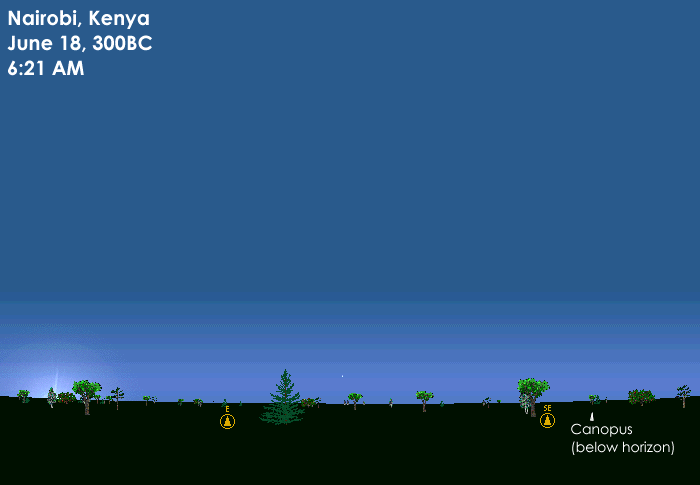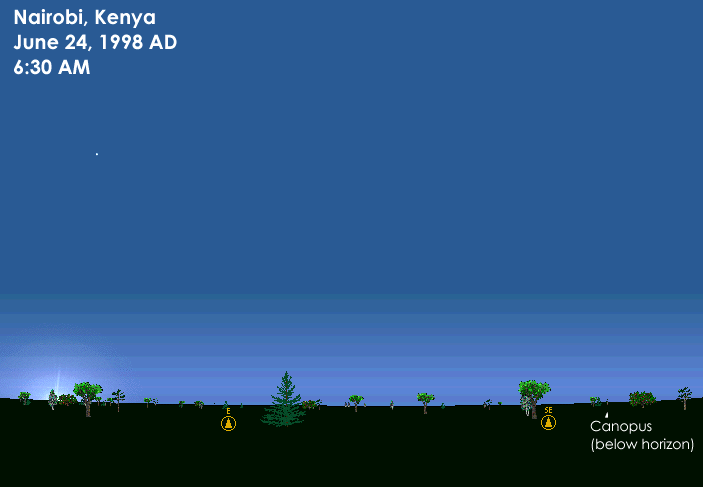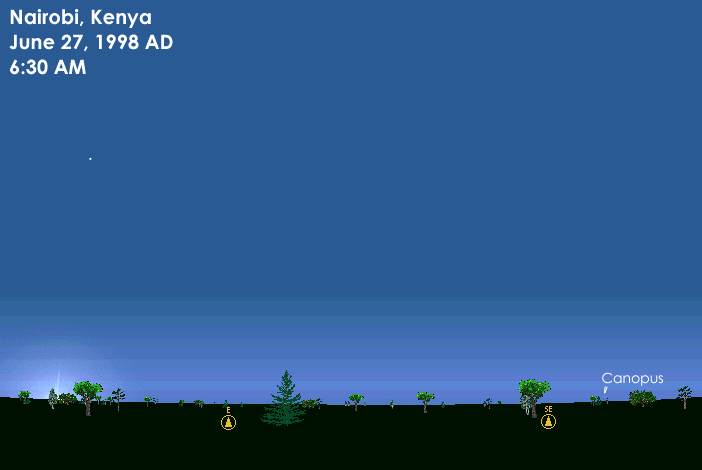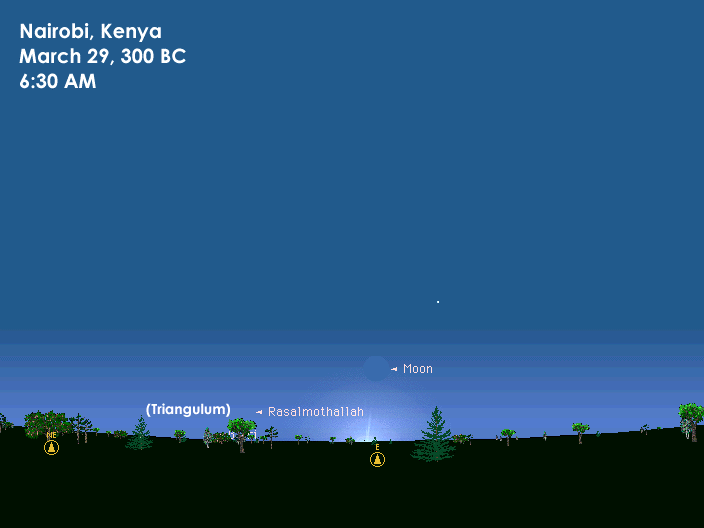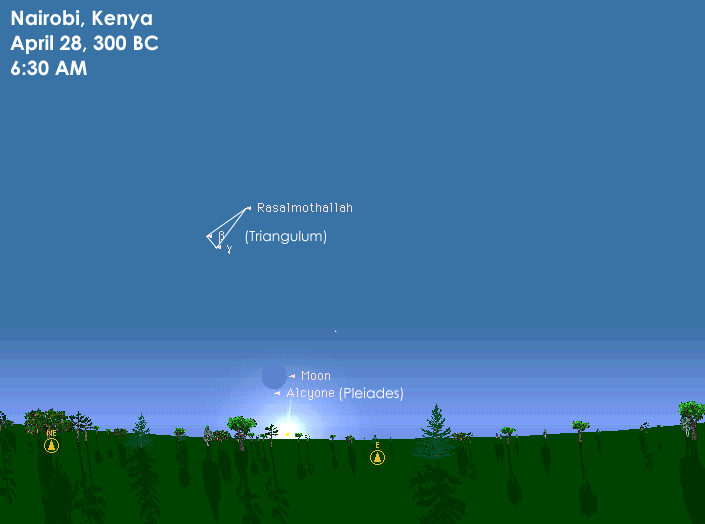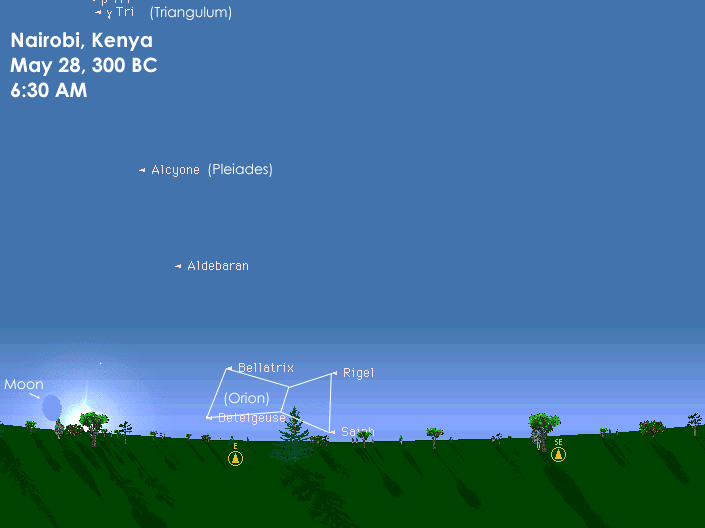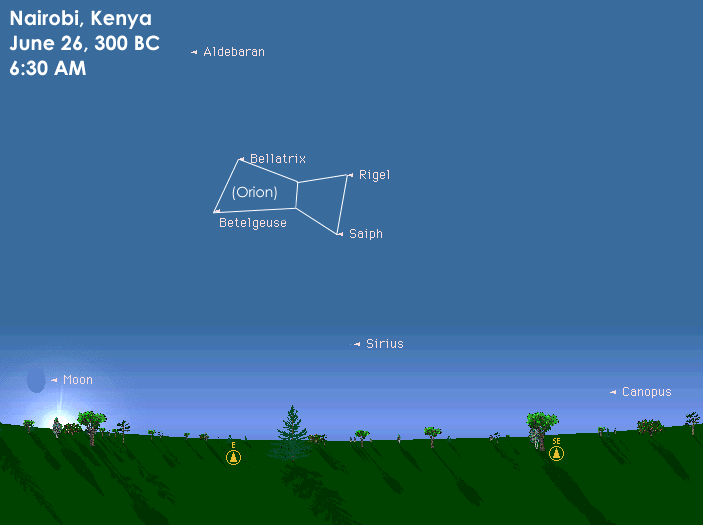| Main Page |
| Information ·Instructor Info ·Class Info ·Acknowledgements ·Dedication ·Bibliography |
| Class Topics ·Ng'amoritung'a ·Nabta ·Petroglyphs ·African Stars ·Borana Calendar ·Sky of Kenya in 300 BC ·The Future |
| Class Research ·Class Emails ·Outside Emails |
| Class Products ·Fiction Stories ·Art Drawings |
| Maps of Africa |
| Other Links |
| Sky Of Kenya in 300 B.C. One of the key features of many African astronomical events is the first rising of Canopus. Canopus rises in June, marking the onset of the dry winter season South of the Equator. Traditionally, the first man to spot it rising after its transition behind the Sun would be awarded a cow. Here is how Canopus appeared in 300 BC rising with the Sun (These images were produced by the "Starry Night" planetarium program)
|

